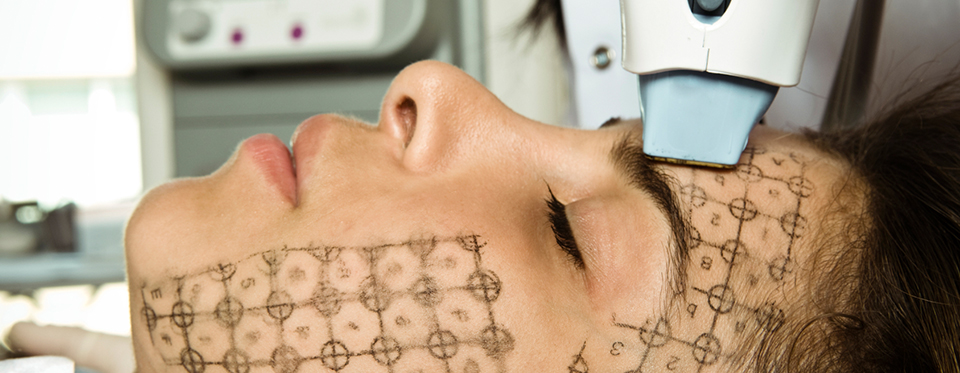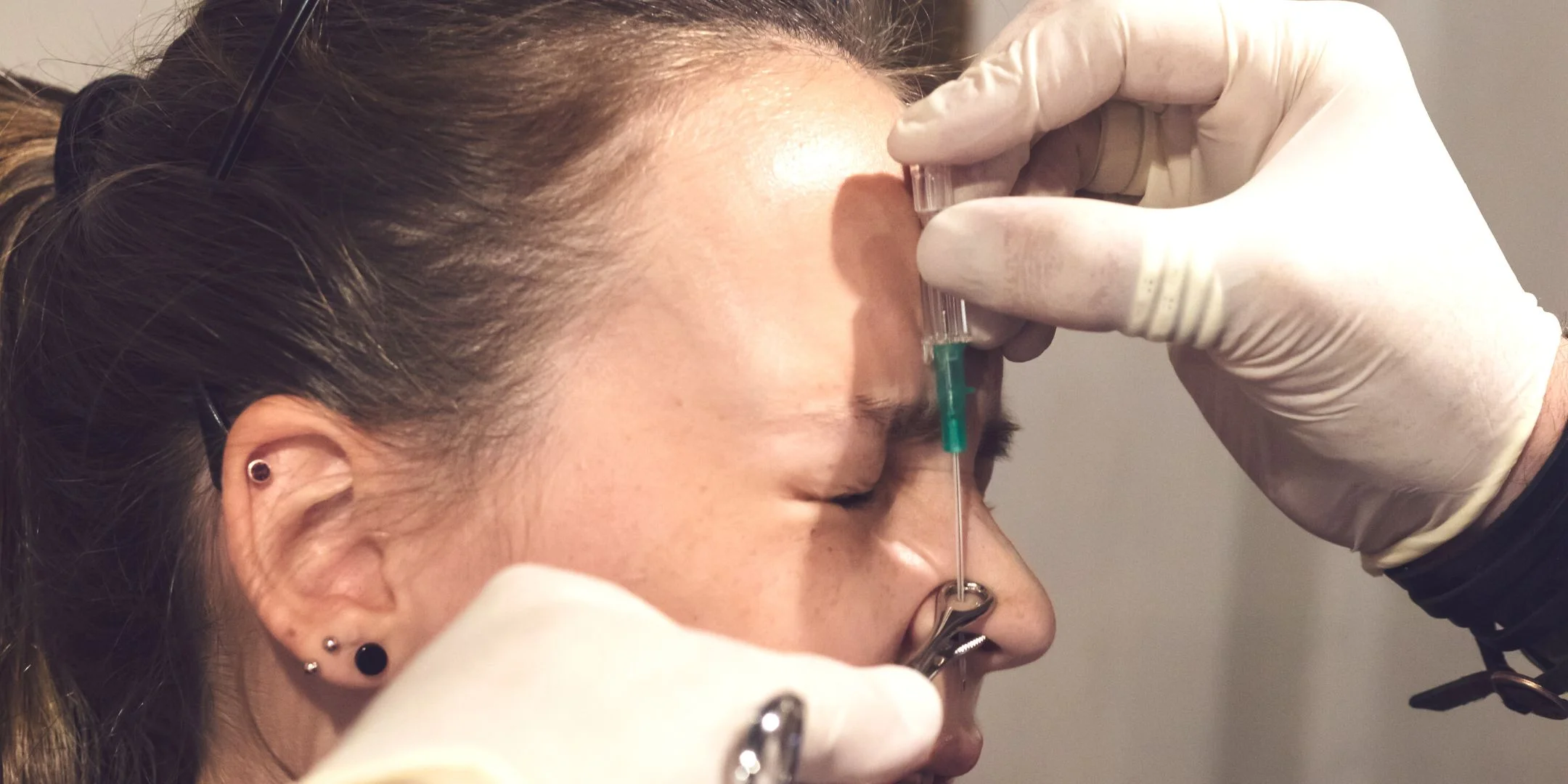Technology and our understanding of facial aging’s root causes are ever-improving, with plastic surgeons combining multiple techniques to achieve unprecedented facial rejuvenation results. The American Academy of Facial Plastic and Reconstructive Surgery (AAFPRS) reports on these trends and more in its latest annual survey.
Two plus two makes much more than four.
This is among the main takeaways from the annual statistics recently released by the American Academy of Facial Plastic and Reconstructive Surgery (AAFPRS).
Yes, neuromodulators such as Botox, Xeomin or Dysport can help get rid of 11’s between the brows and other wrinkles, laser resurfacing can help refresh skin tone and quality, and now a new suture lift can even defy gravity in the drooping mid-face, but growing numbers of facial plastic surgeons have realized that these and other non-invasive facial rejuvenation procedures are stronger together, and by and large today’s youth seekers agree.
In 2016, 66 percent of facial plastic surgeons reported combined non-surgical procedures in the same person as the No. 1 trend in their practice, the new stats show.
It’s really a perfect storm that got us here, explains Gulf Shores, Alabama-based facial plastic surgeon Fred G. Fedok, MD, president of the AAFPRS. The colluding factors include an enhanced understanding of precisely how the face does and does not age, an influx of innovative non-surgical technologies, a growing awareness of options driven by marketing, television shows, and an overall willingness among people to talk about what they have or would have done, and an ever-expanding pool of potential patrons.
A la Carte Facial Rejuvenation
The face ages in five main ways:
- Skin changes such as wrinkles
- Brown spots, age spots, and sallow color from sun damage and sun exposure
- Dynamic fine lines from overactive muscles
- Loss of volume such as hollow cheeks, temple, and eye bags
- Loss of elasticity (excess skin); and the pull of gravity
When you selectively combine available non-surgical treatments, you see a cumulative facial rejuvenation that can correct any and all of the effects of aging on the face – without surgery and its requisite downtime, Dr. Fedok says.
Put another way: the sum is greater than its parts. This means different strokes for and to different folks, AAFPRS leaders say.
“The most common combination of facial treatments is injectable fillers for volume restoration and Botox for wrinkles,” says Baltimore facial plastic surgeon Theda C. Kontis, MD, FACS, also the AAFPRS secretary-elect. “Rejuvenation of the face with these two modalities has been called a ‘liquid facelift’ by some. However, these treatments do not address skin laxity or the aging neck, so many patients are combining injectables with laser or radiofrequency treatments to the neck,“ she says. Facial plastic surgery cost can also be lower when procedures are combined in the same treatments session.
“Twenty-five years ago, we were limited to surgery and dermabrasion, but then came CO2 lasers, followed by fillers and neuromodulators, and now we are getting more savvy because we have learned how to apply these to different parts of the face,” Dr. Fedok says. “Surgery is still part of our armamentarium, and we are using these less invasive options to enhance surgical results and speed recovery time for optimal outcomes.”
And when it comes to non-surgical treatments, the best is likely yet to come, Dr. Fedok adds. “Exciting things like platelet-rich plasma, growth factors and stem cells are in the works, and the next 30 years will be truly amazing.”
Less invasive options enhance surgical results and speed recovery time for optimal outcomes.
Dr. Fred Fedok, president of the AAFPRS
I Do Wanna Talk About It
Facial plastic surgery was once cloaked in secrecy, leaving onlookers to guess what their favorite actress, BFF or sister had done. Those days are over.
“Television commercials and infomercials, reality TV shows like ‘Botched,’ print press, social media and the internet offer constant information 24/7 to the public,” says Easthampton, Massachusetts-based facial plastic surgeon William H. Truswell, MD, president-elect, AAFPRS. “Patients talk with each other, their hair dressers, and consume as much public information as they can before they seek a consultation.”
That they do, Dr. Kontis says.
“Every new patient I see has already performed research on me as well as the products or devices they are considering,” she says. “There are websites now where patients can ask questions to doctors about cosmetic procedures, they can read reviews from patients who have had the procedures done, they can watch YouTube videos of patients who describe their experiences, they can watch the actual procedures, and sometimes they know about new devices on the market before I do.”
The face of cosmetic surgery is getting younger in two important ways, dramatically expanding the pool of interested parties. On one end, the number of patients under 30 seeking cosmetic tweaks continues to grow. Fifty-one percent of AAFPRS members agree that more patients now emphasize early maintenance, with increasing numbers of men and women in their 20s and 30s opting for preventative measures to forestall bigger procedures and surgery. In fact, 56 percent of facial plastic surgeons saw an increase in 2016 in cosmetic surgery or injectables with patients under age 30, the stats show.
“Prevention and maintenance is the goal, and prejuvenation is the tool,” says Dr. Truswell. “Some of the first things patients undergo include skincare with light chemical peels, microdermabrasion, micro-needling, and European facials. Neuromodulation to stop overactive facial muscle movement with the agents Botox, Xeomin, and Dysport is also commonly started early on.” For these millennials, social media and selfie awareness is likely a key driver. Forty-two percent of facial plastic surgeons reported an uptick in patients seeking cosmetic procedures to look better in selfies, Instagram, Snapchat, Facebook Live and other social channels; that’s even more than in 2015.
But on the other end of the aging continuum, Gen Xers and baby boomers are redefining just how arbitrary age and aging really is.”Being 60 today is a lot different than it was decades ago,” Dr. Fedok says. “People are, in general, healthier and feel healthier and look the part.” Some 49 percent of surgeons reported that their patients were seeking a little work to stay relevant and vital at work, the new survey found.
Prevention and maintenance is the goal, and prejuvenation is the tool.
Dr. William H. Truswell, president-elect of the AAFPRS
Facial Plastic Surgery Before and After Innovations
Think about how we think about cheeks today, Dr. Fedok says. “We used to think that filling the nasolabial folds (the skin separating the cheeks from the upper lip) was the best way to restore cheeks, but after observing how people age, we learned that it’s not the deflation of the nasolabial folds, but the cheeks falling down over them, that causes cheeks and cheekbones to disappear with age,” he says. “Cheek implants or mid-face lifts to get the cheeks repositioned were the first way we approached this, but now we know that adding volume whether fat or fillers to the cheek area can produce the same results.”
Designer fillers that address this very concern soon became the talk of the town. As a result of this new thinking, the advent of site-specific cheek fillers and viral chatter surrounding theory availability, close to 50 percent of facial plastic surgeons saw requests to “get their cheekbones back.”
Similar paradigms are seen with the aging brow and nose reshaping, he says.
About the survey:
The online survey was sent to AAFPRS members, with data collected from Dec.12 to Dec. 21, 2016. In total, 90 members responded to the survey. Bases reflect those answering the individual questions.










